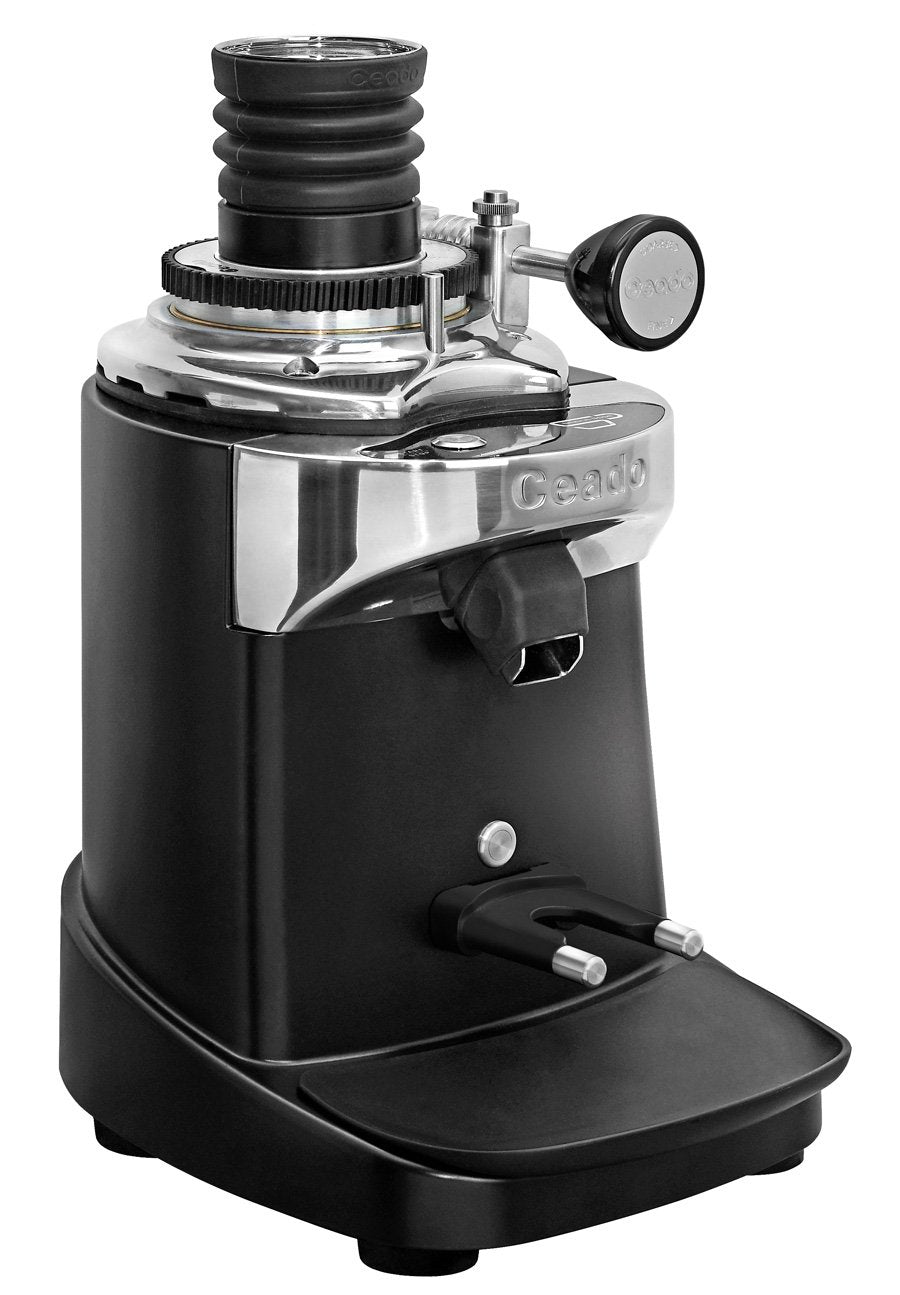How to Pull Consistent Espresso Shots
Whether you’re a new home barista or you’ve been pulling espresso shots for years, we all know how hard it can be to pull consistent espresso shots and create the same delicious beverage day after day. But we have a couple of hacks and coffee tips for baristas so that you can find your sweet spot and pull the perfect espresso shot at home.
How to Store Coffee Beans
We always say that the best coffee and espresso comes from fresh, whole bean coffee. So, the first key to getting tasty and consistent espresso shots is to make sure that you’re properly storing your beans in a sealed, airtight container, away from heat and light.
This will prevent moisture from creating mold and/or stale beans and it will also prevent any heat or light damage to your coffee beans. We suggest picking up a storage container that will keep your beans safe and ready for us.

$21.99
Invest in a Coffee Grinder with Consistent Particle Size
Make sure you get a grinder that produces consistent particle size and gives you the option to make infinitesimal grind adjustments, also known as stepless grinders. We really love the Ceado E37S Quick Set Electronic Coffee and Espresso Grinder: the worm gear adjustment knob allows you to make micro-adjustments without having to take the machine apart and losing your preferred grind sized in its entirety.
Now, if you’re looking for a grinder that doesn’t waste any coffee at all, take a look at the Ceado E37SD, it has a lot of the same features as the E37S but it’s also a single dosing grinder which means the amount of beans you put in the grinder, is the exact weight that you’ll get after grinding. We’ll get more into grind size and weight below.

$3,305.00
Espresso Grind Size
Your grind size will vary depending on the type of coffee you’re using, your brew method and the result you’re going for. But, for beginners, we recommend starting with a grind size resembling granulated sugar, from there you can fine-tune the grind size based on your extraction timing.
The Golden Rule for espresso is that a double shot of espresso sits between 25-35 seconds from the first drip of espresso which should get you a little over 2 ounces or 60 ml. If your extraction is too fast, adjust to a finer grind size, if on the other hand, your extraction is too slow, then adjust to a coarser grind size. Play around with your own grinder to see which results create the perfect espresso for you.
How Many Coffee Grounds Per Cup
If you’re dosing for a double shot of espresso, we suggest starting with 18 grams. You can use a different amount, but for consistency try sticking with 18 grams for each extraction especially if you’re using the same coffee.
If you want to take it a step further, you can use a scale to help you with this step. You can weigh the coffee by itself, in a portafilter or use a grinder with a built-in scale like the Baratza Sette 270Wi, a popular grinder for entry-level home baristas. If your grinder has a timer to dose your coffee feel free to use this to your advantage, but at some point you might want to weigh the coffee so you know what grind time produces a specific weight. You’ll need to reweigh from time to time if changing your coffee, grind size and of course if your coffee gets old.

Weighing your dose of ground coffee in the portafilter helps guarantee consistency when pulling shots.
After grinding, distribute the grinds in the portafilter evenly and tamp to level the surface. An old suggestion that a lot of baristas still adhere to is that you need to tamp with 30lbs of force. Instead, think of it this way, you want to be firm, but not too hard when tamping your coffee. It’s more important to create a level surface that’s parallel to the edge of portafilter than to tamp with exactly 30lbs of pressure.
If you don’t want to worry about tamping pressure, thankfully there’s an easier way to get an even surface level with the right amount of force, using the Jack Leveler. Read more about getting consistent results without having to tamp in our blog below!

How to Setup and Use the Asso Coffee Jack Leveler
Coffee Brewing Temperature
Finally, let’s talk about brewing temperature.
Espresso should be anywhere between 195 to 205 degrees. To make sure your brew temperature is as consistent as possible, make sure your espresso machine and portafilter are locked in and warmed up to proper brew temperatures.

How Coffee Brewing Temperature Affects Flavor
Quick Tip: Even when you aren’t dosing coffee into your portafilter, we still recommend keeping your portafilter locked into the machine, this is especially helpful if you have an E61 group machine since it uses a thermosyphon system that uses water from the boiler to heat up the grouphead, which will keep your portafilter nice and toasty when you’re ready to start extraction.
This technique is also helpful for prosumer dual boiler with PID, just set the temp you want and the boilers and the machine will take care of everything else. For single boiler and heat exchanger espresso machines, use a cooling flush to remove overheated water.

Temperature Stability On A Heat Exchanger Espresso Machine
The flushing technique allows brew water to run until the temperatures drop a bit, this should usually only take a few seconds, however, the flush can be shorter or not needed at all when pulling shots in rapid succession.
Once you’ve achieved consistency in your shots by controlling the grind, dose, and temperature, you can start playing with subtle adjustments for each variable to fine-tune flavor.
 Canada
Canada

